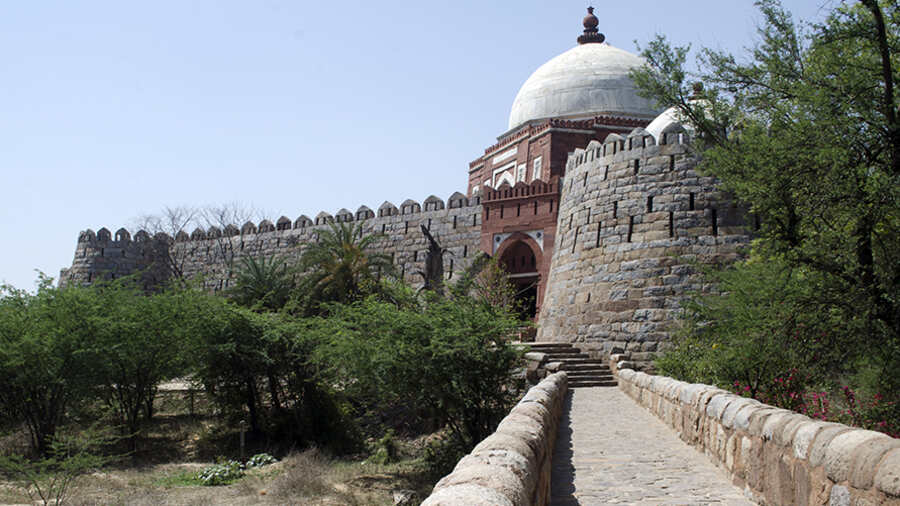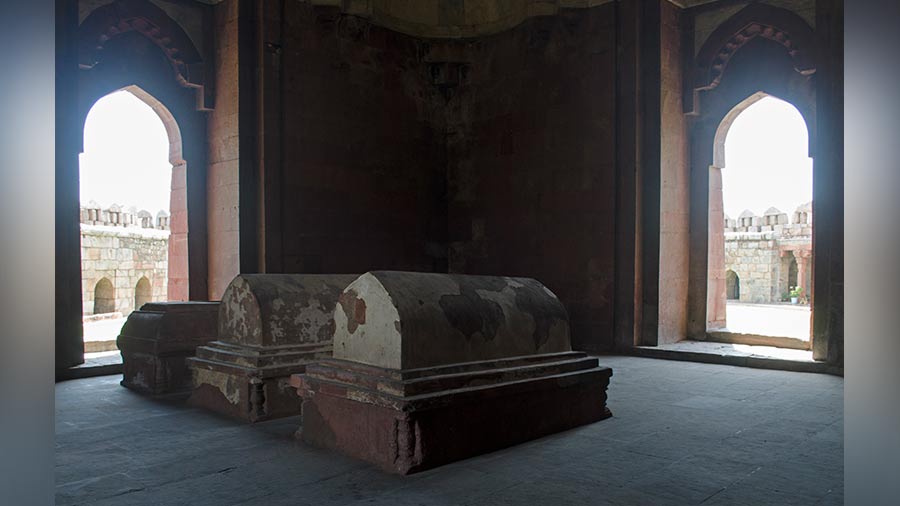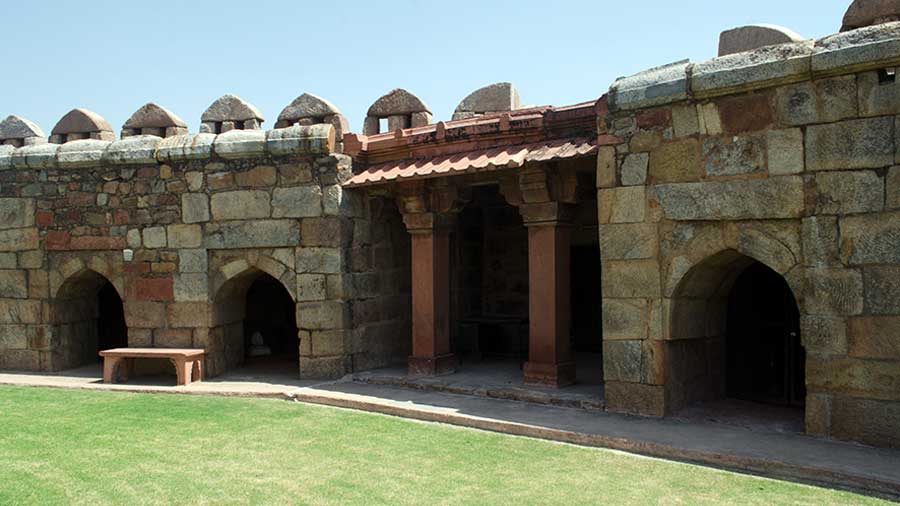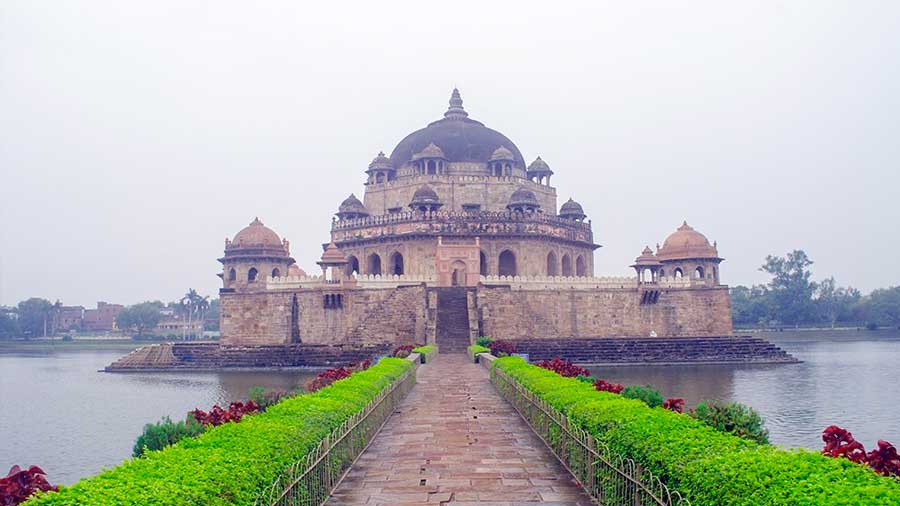The fortified Tomb of Ghiyasuddin Tughlaq, who ruled the Sultanate of Delhi from 1320 to 1325, stands in the vicinity of the massive Tughlaqabad Fort in southern Delhi. The two structures, made by the same man, were once linked by a causeway, but the building of the Mehrauli-Badarpur Road encroached on a part of the connection. A part of the old causeway still links the sprawling fort and the smaller fort-like tomb of the emperor, which is located on the top of a small hill.

A part of the causeway connecting the fort to the tomb
The massive sandstone and marble tomb stands in the middle of a pentagonal fortified complex complete with bastions and battlements. In appearance, it resembles a fort more than a burial complex. Writing about the complex, William Dalrymple notes in his book City of Djinns, “they represent perhaps the most elaborate set of defences ever raised to protect a corpse.”
The tomb was commissioned by Ghiyasuddin Tughlaq himself unbeknownst of the unfortunate death that awaited him. Tughlaq faced a sudden death on his way back to Delhi after the annexation of Bengal in 1325. He was attending a reception given by his eldest son, Muhammad bin Tughlaq in Afghanpur (present day Bihar) when the stage collapsed killing the ruler and his second son. Some historians believe that the whole thing was planned by Muhammad bin Tughlaq.

The tomb as seen from Tughlaqabad Fort
The tomb is built in the typical Tughlaq-style of architecture. The single-domed tomb has a square base with slanting walls made of sandstone. The massive white marble dome rests on an octagonal drum and is crowned with a unique lotus finial. Though free of any ornamentation, the white marble inlay on the red sandstone makes for a striking feature.
The only decorative features are medallions, carved red sandstone pillars and thick arches along with decorative battlements. There are three arched entrances to the tomb, and on the fourth side — on the west — there is a mihrab. The interior of the tomb houses three graves, that of Ghiyasuddin Tughlaq, his wife and his son Muhammad bin Tughlaq.

Inside the tomb, graves of Ghiyasuddin Tughlaq, his wife and son Muhammad bin Tughlaq
Along the northeastern bastion of the complex stands the tomb of Zafar Khan, a trusted general of Alauddin Khalji. The octagonal shaped structure also has a marble dome and predates the tomb of Tughlaq by almost a quarter of a century since Khanreportedly died in 1299. Zafar Khan’s tomb was incorporated into Tughlaq’s fortified complex when it was built.
On four corners of the pentagonal fort there are circular bastions, while the fifth has an open pavilion. On the inside, the ‘fort’ walls have arched entrances to small rooms. One of these, on the left of the open pavilion, has a small grave for Ghiyasuddin Tughlaq’s favourite dog. Some of the cells along the walls also open to underground passageways, which are now closed with iron grill gates and kept under lock and key.

Portion of the fortified wall with arched entrances
Travel details:
- The monument is open from sunrise to sunset
- There is a common ticket for Ghiyasuddin Tughlaq’s Tomb and Tughlaqbad Fort. For Indians ticket cost Rs 20 (cash less) or Rs 25 (cash). For foreigners the rates are Rs 250 and Rs 300 respectively.
Rangan Datta is a mathematics and management teacher by profession and a travel writer and photographer by passion. He has been addicted to discovering off-beat places since his undergraduate days at St. Xavier's College. Blogging and contributing to Wikipedia are his other passions.


